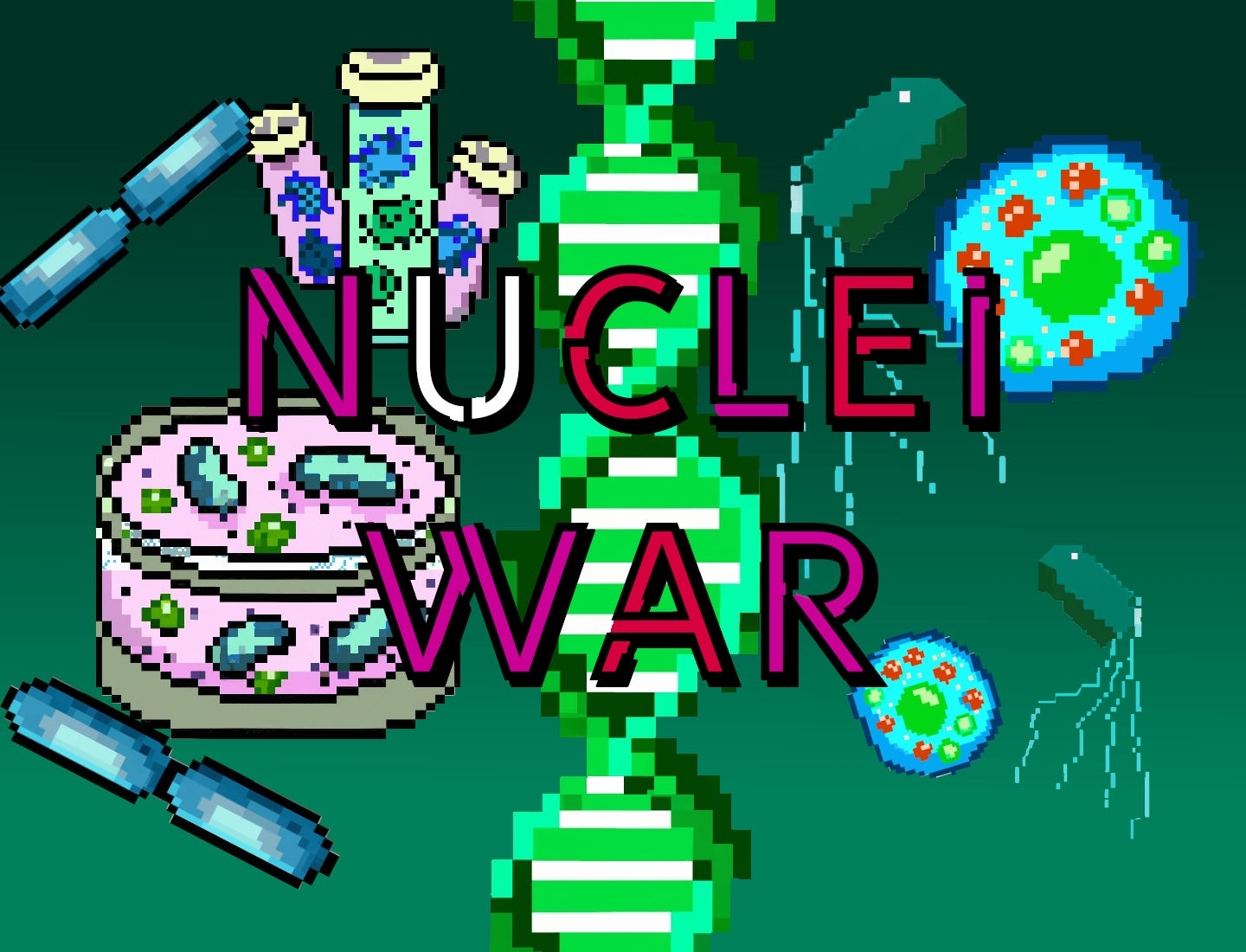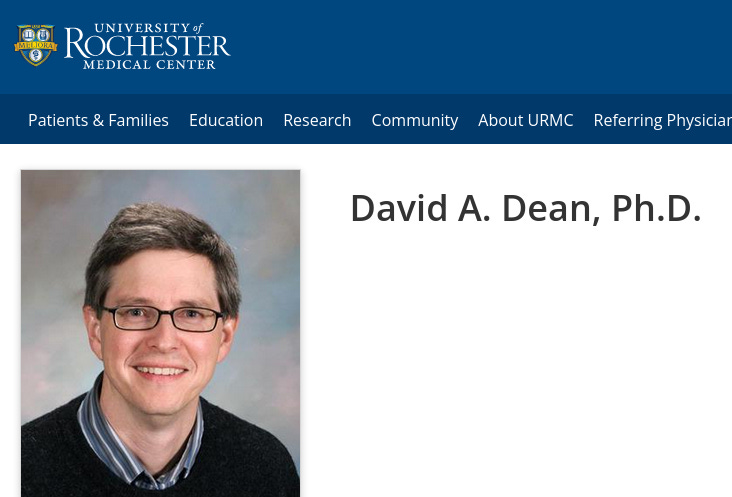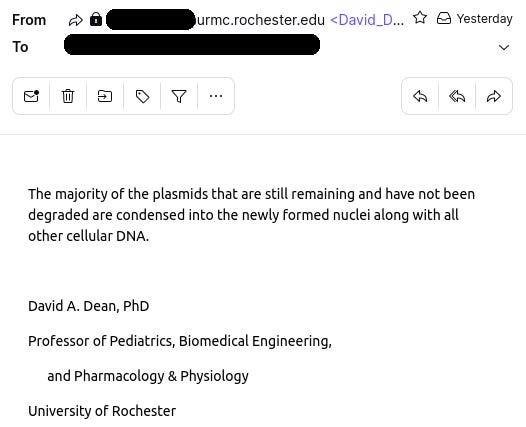Credit to Jikkyleaks for assistance.
This renders the debate on LNPs (lipid nanoparticles) and whether or not SV40 (Simian Virus) promoters exist as less relevant, as it turns out plasmids still have a probability of entering the cell nucleus without transfectant assistance.
A Refresher
So, for those of you not on the same page due to the jargon, a brief refresher.
Plasmids
Plasmids, also known by ‘pDNA’ (short for: plasmid DNA), are a type of ‘double-stranded DNA’ (short: dsDNA) contained within bacteria, such as E. Coli.
Pharmaceutical companies, in oversimplified terms, modify the plasmids within a small amount of E. Coli, and then breed the E. Coli in large quantities in vats to use as genetic source material, particularly in manufacturing. A prime example are the Pfizer shots, which use plasmids produced by AGC Biologics.
In extremely oversimplified terms, the human cell has essentially two main areas, the inner area, containing the nucleus and thus the cell’s DNA, and the outer area, which we’ll simply refer to as the cytoplasm (which is anything within the cell membrane that excludes the nucleus).
‘Normally’ (air quotes are used, as behaviours are clearly still not fully understood) the plasmid can enter the cytoplasm of a cell but typically not the nucleus. In simplified terms, this means the plasmid does not have direct access to the cell’s DNA. Typically.
Transfectants
Transfectants are agents that allow the incorporation of foreign DNA into cells; this may not always mean into the nucleus itself, but ‘simply’ the outer layer (cytoplasm) of the cell.
That said, SV40 promoter allows entry of the plasmid into the nucleus, as do LNPs (lipid nanoparticles), meaning plasmids can alter the DNA of the nucleus of the cell :
Whether or not SV40 promoters are in the shots is currently subject to discussion. Initial data says they are. However, even if they weren’t, LNPs definitely are, and as noted above, they aid plasmid integration into DNA.
As paid subscribers found out previously, it is now becoming publicly admitted knowledge that mRNA-LNPs are capable of gene modification:
In this case, mRNA-LNPs were capable of going for hematopoietic stem cells (HSCs)…
…in order to produce a “gene editor” within the cell:
As noted in an earlier Daily Beagle article, Health Canada admits plasmids are in the shots, but also admit they knew all along and simply don’t care.
But what if we suppose, for argument’s sake — even though we know otherwise — neither the SV40 promoter nor the LNPs could integrate plasmids? What if they magically did not exist?
Plasmids Can Still Integrate Into The Nucleus Without Transfectants
This is a killer story, because whilst everybody else is debating whether or not SV40 promoters exist, or if LNPs have the power to transfect plasmids into the nucleus for DNA alteration…
…the Daily Beagle has evidence they’re not needed for nucleus integration, and thus DNA alteration, to occur. How did we find this out?
We came across an article by David A. Dean, PhD (pictured above), a Professor of Pediatrics, Biomedical Engineering, and Pharmacology & Physiology, who has done research into plasmid integration into cells. So to say he’s qualified is an understatement.
Part of the article, titled “Nuclear Targeting of Plasmids and Protein-DNA Complexes”, goes on to remark (emphasis added):
Furthermore, we have demonstrated that portions of the 72 bp SV40 enhancer are required for the nuclear entry of plasmid DNA in all eukaryotic cells tested to date; plasmids not containing this sequence remain in the cytoplasm until cell division, whereas plasmids containing the enhancer migrate to the nucleus within several hours […]
To some reading the paragraph, they might jump to the conclusion the SV40 is ‘required’ for nucleus integration by plasmids (surely, that’s what it clearly says!).
However, The Daily Beagle noticed it does not mention what happens to the ‘normal’ plasmids during and after cell division:
[… ] plasmids not containing this sequence remain in the cytoplasm until cell division […]
…What happens after cell division?
Suspecting this absence implied the plasmids could integrate during cell division without a transfectant (a very carefully omitted fact), The Daily Beagle asked a very simple and pointed question to David A. Dean via email:
What happens to the non-sequence containing plasmids when cell division occurs?
His reply was eye-opening:
The majority of the plasmids that are still remaining and have not been degraded are condensed into the newly formed nuclei along with all other cellular DNA.
Nuclei is the plural for nucleus (there’s more than one as during cell division, as a cell splits into two). Essentially, what David A. Dean is saying is any of the surviving plasmid integrates within the cell nucleus during cell division. Without the aid of a transfectant.
With Large Numbers, Low Probability Becomes Guaranteed
Whilst scientists will be quick to point out this is likely a ‘low probability event’ (as the plasmids will mostly disintegrate), it is not zero, and with the sheer quantities of plasmid contamination in the mRNA shots being exposed by scientists like Buckhaults, evidence of Pfizer using plasmids, Health Canada’s admittance of plasmids…
…and repeat dosing from multiple shots, this is not a zero-probability event. It is pretty much guaranteed, given the large numbers at play here.
Transfectants like SV40 promoters and LNPs pretty much guarantee plasmid integration into cell DNA. But even if they didn’t… the plasmids could still integrate anyway.
Feel safer yet?
Summary
Plasmids are dsDNA found in bacteria that are capable of entering the cytoplasm of a human cell. Plasmids do not typically integrate into the DNA via the nucleus, however there is a probability they will integrate into nuclei so during cell division if they do not disintegrate first, according to information from David A. Dean, PhD, who researches plasmid integration into cells.
mRNA shots are shown to have plasmid contamination; Pfizer work with AGC Biologics who manufacture plasmids for the Pfizer shot; Health Canada admit they always knew about the plasmids in the shot, but don't care. The presence of plasmids in the shots are not in dispute.
Transfectants aid the entry of agents into cells, and SV40 promoter and LNPs are stated to allow plasmids to transfect the nucleus of a cell; SV40 promoter can do so 'within hours', according to the article "Nuclear Targeting of Plasmids and Protein-DNA Complexes".
Even if they didn't; plasmids can still integrate anyway, and due to frequency of shots and high rates of contamination, even if low probability, is still guaranteed to basically occur.Related Articles To Read
Near To Zero: Sterilisation Viruses and "Malnutrition Vaccines"
EMA Leaks: Trial Site News Finds Pfizer Likely Committed Fraud
Found this informative? Receive more for free!
Raise awareness?
What do you think, dear reader? Let us know in the comments.












Eek!
So glad I said No!
More good news/sarc.